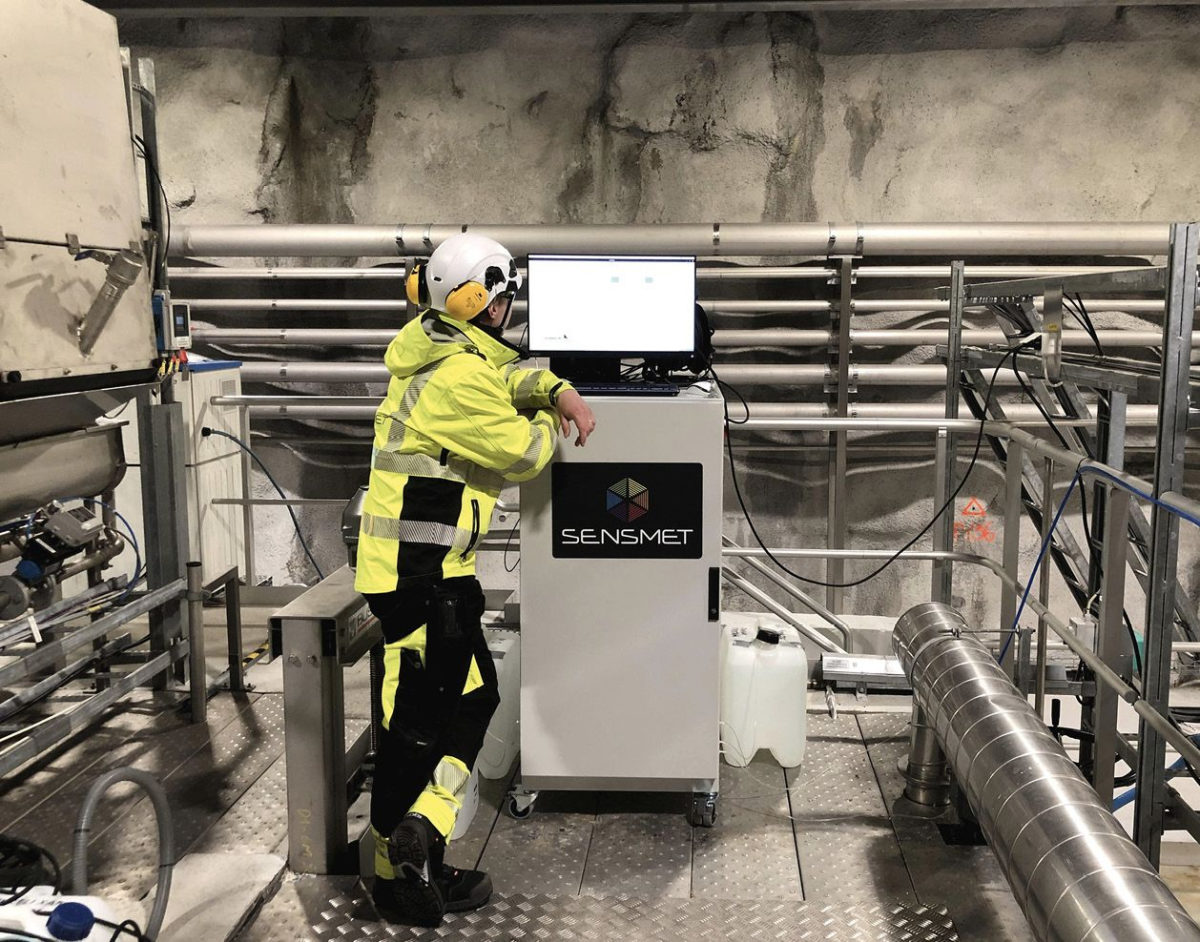As international efforts to fight climate change intensify, the main challenge for battery manufacturers and their supply chains is to find new ways to most efficiently meet soaring demand for electric vehicles (EVs).
The laborious batch sampling and laboratory analysis typically used by battery metal manufacturers to control their processes usually takes around four to 10 hours. As a result of this delay, process managers are unable to efficiently adjust the dosing of chemicals.
Consequently, raw materials are wasted and product purity – the most important component for product quality – is difficult to control. Impurities significantly affect the performance of li-ion (lithium-ion) batteries. Sampling for laboratory analysis is also expensive and often challenging to arrange around the clock.
For these reasons, continuous, real-time process monitoring – which our startup Sensmet has successfully developed – has long been a goal pursued by lithium producers.
Continuous monitoring
Sensmet’s Micro-Discharge Optical Emission Spectroscopy (µDOES), enables the multi-metal, real-time analysis of aqueous samples. The online technology is also suited to the “black mass” recycling of battery metals. The patented µDOES technology is based on atomic emission spectroscopy. A micro-discharge (electric spark) is created directly inside the aqueous sample, causing a microscopic volume of the liquid surrounding the micro-discharge to be flash-heated to 10,000 C. Molecular species in the micro-discharge are dissociated into atoms which are excited to their respective higher electronic states. Upon returning to their ground state, the atoms release excess energy by emitting light at their characteristic wavelengths.
The µDOES system measures the atomic emission spectrum to derive quantitative analysis of the metals in the sample. Real-time data are displayed, showing the concentrations and trends for each metal and alarm levels can be set for each element. Results are digitally transferred to user databases and/or the cloud.
In hydrometallurgical processes that cannot be controlled by monitoring pH, direct measurement of dissolved metal concentrations is essential. Alternative monitoring methods have major limitations. For example, x-ray fluorescence is unable to measure lightweight elements such as lithium and sodium and is almost impossible to calibrate for low-concentration impurity measurement.
Main advantages
Given the large sums involved in lithium manufacture, accurate dosing of precipitation chemicals is extremely important. For example, when sodium carbonate is added to a slurry containing beta spodumene under high temperature and pressure, lithium carbonate and analcime solids are formed. If insufficient sodium carbonate is dosed, some of the lithium will not react to form lithium carbonate, and unreacted lithium will be lost in side-product analcime sand. Overdosing is undesirable too, as it results in process chemical waste and excessive chemical costs.
Continuous monitoring is also vital for the reduction of battery metal impurities such as sodium, potassium, copper, zinc, and calcium; all of which can be measured by µDOES at any stage of the hydrometallurgical production and recycling process. Strict monitoring and control can therefore reduce impurity levels.
Analysis impacts
The mobility revolution has dramatically increased the importance of battery technology and driven high demand for new solutions that can help improve the quality and efficiency of production.
High purity lithium hydroxide or lithium carbonate is required for battery manufacture. Impurities represent a significant challenge because they cause poor charging performance, lower the range of EVs, require more frequent charging, offer poorer performance in cold temperatures and, in some cases, can cause overheating.
As the EV market develops, and global battery metal resources start to dwindle, there will be an even greater emphasis on the recycling of used devices. The online µDOES analyzer will help provide a solution because the processes involved with black mass recycling have to be closely monitored and controlled.
The µDOES system can help the battery industry realize effective processes and quality control. Continuous, simultaneous measurements of multiple metal species in an aqueous matrix offers battery metal manufa cturers the opportunity to improve process efficiency, lower costs, increase throughput, and improve the quality of the final product.
cturers the opportunity to improve process efficiency, lower costs, increase throughput, and improve the quality of the final product.
About the author: Aappo Roos is chief sales officer for Sensmet Oy, which was founded in 2017 as a university spinoff, following years of research on micro-discharge analyzer technology and related application development.
The views and opinions expressed in this article are the author’s own, and do not necessarily reflect those held by pv magazine.
This content is protected by copyright and may not be reused. If you want to cooperate with us and would like to reuse some of our content, please contact: editors@pv-magazine.com.



By submitting this form you agree to pv magazine using your data for the purposes of publishing your comment.
Your personal data will only be disclosed or otherwise transmitted to third parties for the purposes of spam filtering or if this is necessary for technical maintenance of the website. Any other transfer to third parties will not take place unless this is justified on the basis of applicable data protection regulations or if pv magazine is legally obliged to do so.
You may revoke this consent at any time with effect for the future, in which case your personal data will be deleted immediately. Otherwise, your data will be deleted if pv magazine has processed your request or the purpose of data storage is fulfilled.
Further information on data privacy can be found in our Data Protection Policy.